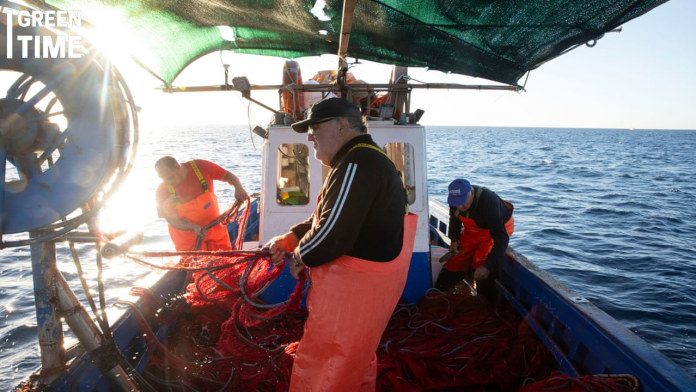Located in a modest neighbourhood in Catania on the eastern coast of Sicily, the atmosphere is permeated with the savoury scent of grilled horse meat and the invigorating effervescence of seltzer with lemon and salt. In the midst of a lively street food scene, a family of former fishermen has established a seafood restaurant that is defying traditional regional norms and directly addressing an ecological catastrophe.
“La Fish,” the latest endeavour by the Salamone family, presents a menu of traditional Sicilian delicacies such as swordfish, sardines, and tuna. Nevertheless, the highlight of tonight’s tasting menu is the Atlantic blue crab, a recent arrival that has quickly established itself along the Mediterranean coast. These crabs, with their eye-catching blue claws and olive-green shells, are showcased on a spacious fish counter not only for their culinary appeal but also as a proactive solution to an escalating environmental problem.
The blue crab, native to the western Atlantic Ocean, lacks natural predators in the Mediterranean and is causing significant damage to local ecosystems. The voracious appetite of this species for juvenile clams poses a significant risk to the traditional shellfish industry in Italy, perhaps undermining its status as a leading producer of clams. However, the Salamone family perceives this catastrophe as a chance for advancement.
Chef Mario Contadino, the head of the kitchen at La Fish, enthusiastically expresses his fondness for the blue crab. He commends the sweet and delicate flavour of it, which he says enhances the complexity of any dish. In order to persuade the indigenous community to accept this unfamiliar species, he presents it on adhesive sushi rice, accompanied with onions, bell peppers, garlic, tomatoes, and coriander, and adorned with vivid, consumable yellow blooms. Although there was some early doubt among the local community, Contadino is convinced that the delectable flavour of the blue crab will ultimately win them over. “The initial taste is a reliable indicator,” he affirms.
Francesco Tiralongo, a marine biologist from the University of Catania, has conducted thorough surveillance of the significant increase in the population of blue crabs. He states that the increasing water temperatures in the Mediterranean have resulted in a favourable habitat for these invasive species. Tiralongo emphasises the importance of modifying fish consumption patterns to incorporate non-native species such as the blue crab as a means of tackling climate change and ecological issues.
The lively fish market located below Piazza del Duomo in Catania exemplifies this change. In the midst of the noisy and lively atmosphere created by dealers and the diverse array of sensory stimuli, Rosario, a fisher from the area, sells blue crab along with other types of seafood. The quantity of his sales has significantly increased from a few kilogrammes per day to an average of 20 kilogrammes per day, as clients have developed an admiration for the crab’s gentle and exquisite flavour.
Rosario observes that while conventional crustaceans are diminishing in numbers, blue crabs are progressively more prevalent. He emphasises that Sicilians, who often consume fish, are increasingly embracing the blue crab as a new dietary mainstay. Commonly enjoyed dishes include spaghetti with tomato sauce, although Rosario personally favours boiling crab.
The ascent of the blue crab is not devoid of its difficulties. The proliferation of the invasive species is inflicting substantial economic hardship on local fishermen through the destruction of fishing nets and the depletion of clam and mussel populations. Alberto Pulizzi, the director general of the fisheries department of the Sicilian regional government, recognises the economic consequences and underscores the necessity for novel approaches to regulate these intruders.
Tommaso Salamone’s motivation for creating La Fish was straightforward: if you can’t overcome a challenge, consume it instead. The Salamones hope to transform an ecological disaster into a gastronomic opportunity by crafting meals that highlight the culinary potential of the blue crab. “We are preparing these dishes using blue crab to demonstrate that any food can be consumed,” Tommaso asserts.
La Fish’s ability to attract a wide range of customers, including local families and culinary enthusiasts, demonstrates the success of the Salamone family’s inventive approach. Their willingness to embrace change has resulted in the creation of delightful new opportunities.

